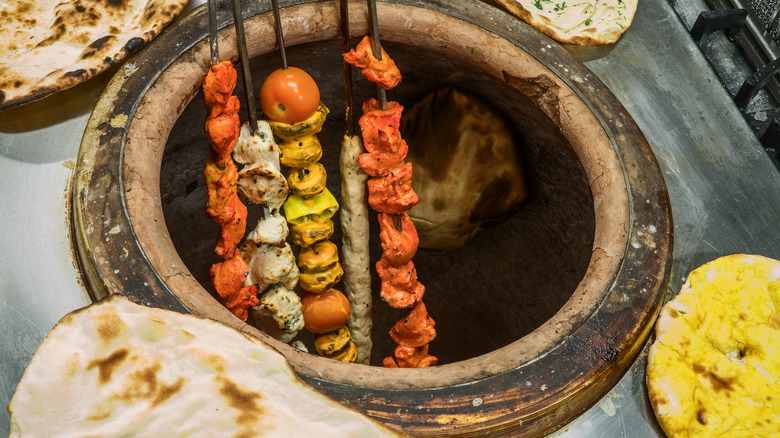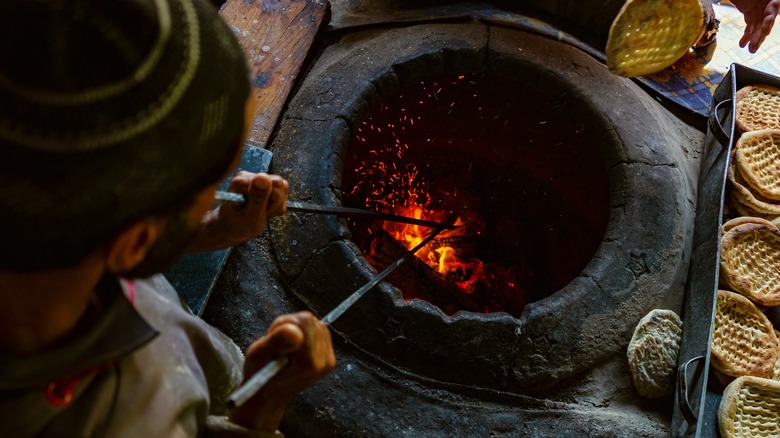The Origin Of Tandoor Ovens Dates Back To The Age Of The Pyramids
The tandoor oven is extremely simple in its design, which is precisely why it's so brilliant to behold. These massive clay urns, with a minimum height of 1 meter (just over 3 feet), are typically buried up to the brim in the earth, per Britannica. Traditionally, the ovens are heated by charcoal fires and reach such blazing hot temperatures that a small whole chicken can be cooked in under 10 minutes, according to Food & Wine. Common applications include the making of flatbreads and tandoori chicken.
We tend to think of the tandoor oven exclusively in Indian cuisine, but its reach extends to other cultures. Notably, the South China Morning Post reveals that the Uyghur Muslim population commonly uses tandoor ovens in Xinjiang province. They were evidently introduced to China from India via the Silk Road trade routes established under the Han Dynasty around 130 B.C. But, of course, this begs the question: If tandoor ovens were making international journeys over 2,000 years ago, how long have they been used in India? The short answer is a long, long, long time.
5,000 years of tandoor
According to The New York Times, archaeologists in the Indian state of Rajasthan have unearthed the remains of tandoor ovens that date back to 2,600 B.C. This is roughly the same time that the pyramids of Egypt were built. As such, tandoors can be credited with feeding one of the world's first civilizations. Additionally, Britannica points out that Rajasthan was once home to a portion of the Indus Civilization, also known as the Harappan. Emerging roughly 5,000 years ago, the Indus is one of the oldest human civilizations, along with Egypt and Mesopotamia, according to LiveScience.
Amazingly, the tandoor oven appears to have hardly changed in its five millennia of existence, and its functions remain the same. The New York Times notes that the early tandoors uncovered in Rajasthan were evidently used to make flatbread, a purpose they still fulfill today as the means of cooking Indian naan and roti as well as Turkmenistan's chorek.
According to the outlet, records trace the practice of roasting skewered meat in a tandoor to as early as 800 B.C. One especially notable proponent of the tandoor was Shah Jahan, the emperor who ordered the construction of the Taj Mahal. He had a portable tandoor custom-made, so he would never have to go without it, even on his travels. Few, if any, cooking methods have endured unchanged for so long. When you reach into a tandoor, you reach into the annals of history.

